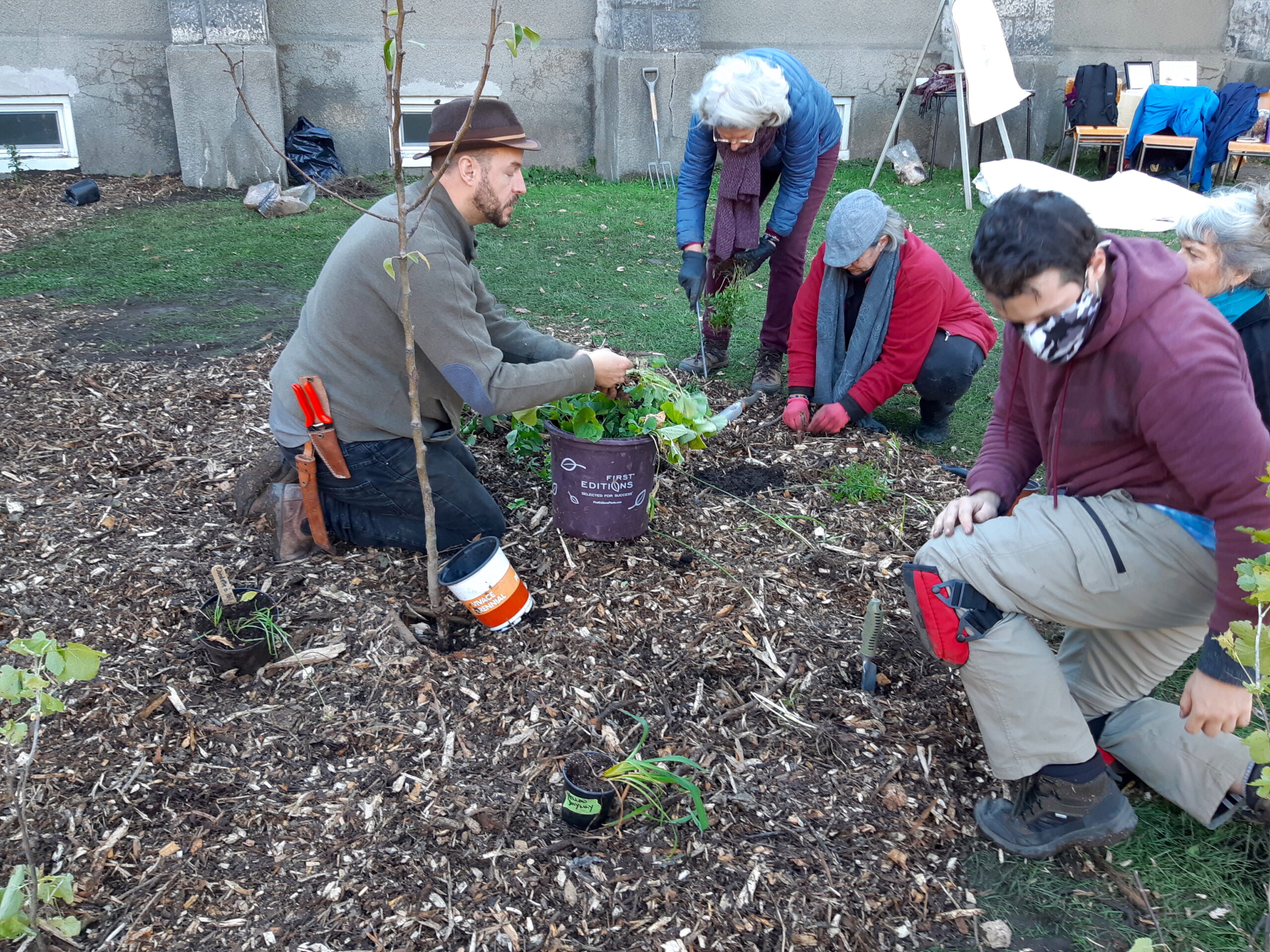St Philip’s Church is blessed to be situated on a large lot; a green space which, until a few years ago, was mostly grass, a few flower beds and an assortment of trees and shrubs.
In the summer of 2019, we began the process of re-imagining our property. We envisioned a welcoming space with food-to share vegetable and herb beds, fruit trees and bushes and a pollinator garden.
Within a few months, thanks to community connections, the first raised bed had been constructed and we had an overall plan for the property on the west side of the Memorial Hall.
In 2020, as we continued to implement our master plan, we were approached with the possibility of creating a pocket forest on the east side of the hall.
Pocket or mini forests are densely planted small “forests” designed to copy the attributes of a large, wooded area, but in an urban setting.
These forests are a small step in the fight against climate change. They not only provide food and shelter for birds and animals; they can also help reduce city heat and reduce flooding after heavy rainfalls.
For St. Philips, this interesting project would allow us to continue both the “greening” of the property and our involvement with the community.
After discussions with P3Permaculture’s, Graham Calder and various members of the wider community, we decided to move forward; on the weekend of October 23-24, in collaboration with Incredible Edibles and The Depot Community Food Centre, St. Philip’s hosted a Pocket Forest workshop.
Armed with Graham’s list of what was needed, we scrounged large cardboard boxes from recycling piles and found several sources of wood chips.
Calls for donations of plants and small trees were made on Facebook pages. The response from fellow gardeners was amazing. Among other things, we received two good sized pear trees, apricot, peach and elderberry seedings, raspberry canes, gooseberry, goji and red currant bushes, daylilies, and numerous ground covers.
Twenty or so people signed up for the workshop, although not everyone came for both sessions. Due to Covid restrictions we had to meet outside.
During the first session, Graham explained the benefits and philosophy behind the concept of pocket forests.
The next afternoon we got to work, wetting and peeling tape from flattened cardboard boxes, digging a trench from the side of the Hall out to the forest site, moving the mound of wood chips, layering the cardboard and wood chips and, finally, planting the pear trees and many other edible/flowering plants.
The trench, which was later filled with wood chips, will help collect and store some of the water coming from the roof when it rains. From there it will seep slowly into the rest of the garden. In theory, once established, this space should not need to be watered.
Once the pocket forest was finished, we had many leftover plants. With the remaining cardboard and woodchips, two guilds (fruit tree seedlings surrounded by plants which will grow to varying heights and bloom at different times) were created in a sheltered area near the church.
If you have questions about the pocket forest, community garden or future workshops, email Anne at [email protected]


